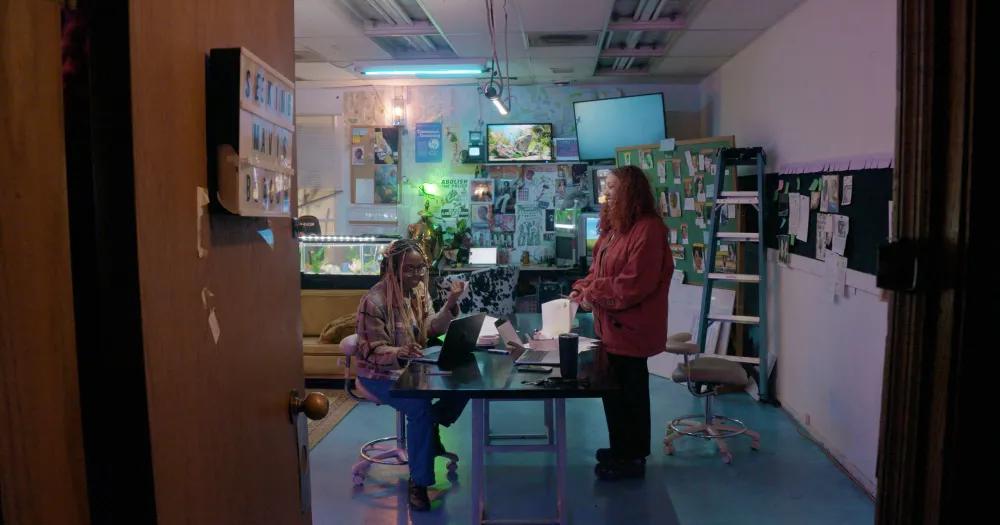With a healthy dose of heart and whimsy, the Sundance documentary Seeking Mavis Beacon follows two young Black women who are devoted to finding the original model for Mavis Beacon Teaches Typing. If you touched a computer during the ’80s or ’90s, there’s a good chance that Mavis helped you get comfortable with a keyboard. Or at the very least, you might remember her from the program’s original 1987 cover: a smiling, elegant Black woman dressed in a cream-colored outfit. She embodied style and professional poise — it was as if you could be just as capable as her if you bought that program.
It’s no spoiler to say that “Mavis Beacon” didn’t really exist – she was a marketing idea crafted by a group of white dudes from Silicon Valley. But the program’s cover star was real: Her name was Renee L’Esperance, a Haitian model who was discovered while working at Saks Fifth Avenue in Los Angeles. After her image helped make Mavis Beacon Teaches Typing a success, she retreated from the spotlight, reportedly heading back to retire in the Caribbean.
Seeking Mavis Beacon
The documentary’s director and writer, Jazmin Jones, as well as her collaborator, Olivia McKayla Ross, start with those basic details and set out to find L’Esperance like a pair of digital detectives. From a home base in a rundown Bay Area office – surrounded by tech ephemera, a variety of art pieces and images of influential black women – they lay out L’Esperance’s reported timeline, follow leads and even host a spiritual ceremony to try and connect with the model.
I won’t say if the pair actually end up finding L’Esperance because it’s the journey that makes Seeking Mavis Beacon such a joy to watch. Jones and Ross both grew up with the typing program and felt a kinship toward the character of Mavis Beacon. It was the first program to prominently feature a Black woman on the cover (a move that reportedly caused some suppliers to cut their orders), so it made the technology world seem like somewhere young Black women could actually fit in. Beacon’s digital hands also appear on-screen, as if she’s gently guiding your fingers to the correct letters and positioning.
To help uncover more details about the whereabouts of Mavis Beacon, Jones and Ross set up . Some of those calls are featured in the film, and they make it clear that her digital presence inspired many people. The film opens with references to Beacon throughout culture, including one of my favorite bits from Abbott Elementary, where Quinta Brunson’s over-achieving teacher is far too excited to spot the typing icon in a school crowd. I was reminded of my own childhood experience with Mavis Beacon Teaches Typing, spending free periods at school and idle time at home trying to get my typing speed up. By middle school, typing felt as natural as breathing. And yes, I would also have freaked out if I saw the real Beacon in person.
While the documentary doesn’t seem out of place at Sundance, which is known for innovative projects, it also sometimes feels like a piece of experimental media meant for YouTube or an art show filled with impossibly cool twenty-somethings. (At one point, Ross attends a farewell ceremony for one of her friends’ dead laptops, which was hosted in an art space filled with people dressed in white. That’s the sort of hip weirdness that will either turn you off of this film, or endear you to it more.)
This story originally appeared on Engadget

